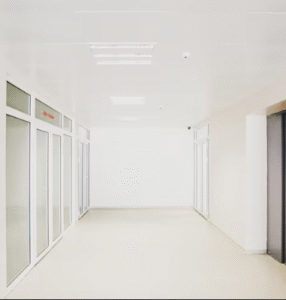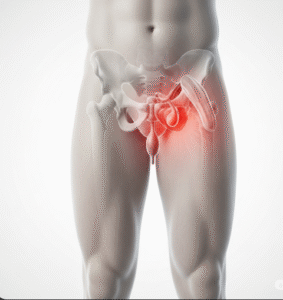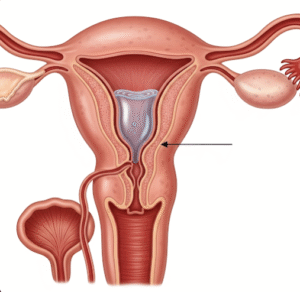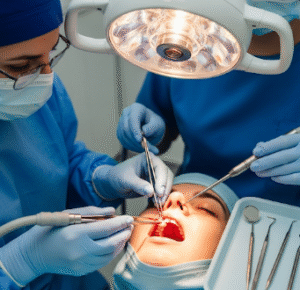Overview
High uric acid level, also known as hyperuricemia, occurs when there is an excessive amount of uric acid in the blood. Uric acid is a waste product formed from the breakdown of purines, substances found naturally in the body and in certain foods.
➤ Persistent hyperuricemia can lead to gout, kidney stones, and chronic kidney disease.
➤ Risk factors include diet high in purines, obesity, metabolic syndrome, genetics, and kidney dysfunction.
➤ In Korea, advanced laboratories and hospitals provide blood testing, imaging, dietary counseling, and medical management to monitor and treat high uric acid levels.
Key Facts
► Definition: Elevated concentration of uric acid in the bloodstream.
► Normal range: Typically 3.5–7.2 mg/dL for men and 2.6–6.0 mg/dL for women.
► Prevalence: Common in adults, especially those with metabolic syndrome, hypertension, or obesity.
► Symptoms: Often asymptomatic, but may progress to gout attacks, joint pain, or kidney stones.
► Treatment in Korea: Lifestyle interventions, medications, and management of underlying conditions.
What is High Uric Acid Level?
High uric acid level is a biochemical condition where uric acid accumulates in the blood, exceeding the kidneys’ ability to excrete it efficiently.
➔ While many individuals may remain asymptomatic, prolonged hyperuricemia can lead to urate crystal deposition in joints and tissues, causing pain and inflammation.
➔ It is often linked with gout, a form of inflammatory arthritis, and may contribute to kidney stones or cardiovascular risks.
What Symptoms Are Related to High Uric Acid?
Symptoms may be absent initially, but as uric acid crystals accumulate, they can manifest as:
→ Gout attacks: Sudden, severe pain, redness, and swelling, often in the big toe (podagra).
→ Joint stiffness and tenderness, particularly in feet, ankles, knees, and elbows.
→ Tophi formation: Hard deposits of urate crystals under the skin in chronic cases.
→ Kidney stones leading to flank pain, hematuria, or urinary obstruction.
→ Fatigue or malaise in some cases of chronic hyperuricemia.
→ Frequent urination or mild kidney dysfunction in advanced kidney involvement.
Causes / Possible Causes of High Uric Acid
Dietary Factors
➤ High intake of purine-rich foods such as red meat, organ meat, seafood, and alcohol (especially beer).
➤ Sugary beverages and fructose-rich foods may increase uric acid production.
Genetic and Metabolic Factors
➔ Family history of hyperuricemia or gout increases susceptibility.
➔ Metabolic syndrome, obesity, hypertension, and insulin resistance are linked to impaired uric acid excretion.
Kidney Dysfunction
→ Reduced kidney function can impair uric acid elimination, leading to accumulation.
Medications
► Diuretics, low-dose aspirin, and some immunosuppressive drugs may elevate uric acid levels.
Other Medical Conditions
➤ Hypothyroidism and certain cancers may increase uric acid.
➤ Rapid cell turnover from chemotherapy or hemolytic disorders can lead to high uric acid.
When Should I See My Doctor?
Medical attention is warranted if:
➤ You experience sudden severe joint pain, swelling, or redness (possible gout attack).
➤ You have persistent high uric acid levels on blood tests.
➤ Signs of kidney stones appear: flank pain, blood in urine, or urinary obstruction.
➤ You have metabolic syndrome, obesity, or hypertension, which may exacerbate hyperuricemia.
➤ Early intervention helps prevent gout, kidney damage, and cardiovascular complications.
Care and Treatment
Lifestyle and Dietary Measures
► Reduce purine-rich foods such as red meat, organ meat, and certain seafood.
► Limit alcohol, especially beer and spirits.
► Increase hydration to help uric acid excretion.
► Maintain a healthy body weight through diet and exercise.
► Eat low-fat dairy, vegetables, and whole grains, which may reduce uric acid.
Medical Treatments
➔ Xanthine oxidase inhibitors (e.g., allopurinol, febuxostat) to reduce uric acid production.
➔ Uricosuric agents (e.g., probenecid) to enhance uric acid excretion.
➔ Anti-inflammatory medications during acute gout attacks (NSAIDs, colchicine, corticosteroids).
➔ Medications for underlying conditions like hypertension or kidney disease.
Monitoring and Follow-Up
→ Regular blood tests to track uric acid levels.
→ Imaging for joint or kidney evaluation if symptoms arise.
→ Adjust lifestyle and medications according to response.
Treatment Options in Korea
South Korea provides comprehensive care for hyperuricemia, combining preventive, medical, and interventional approaches:
Diagnosis in Korea
➤ Blood tests to measure uric acid and kidney function.
➤ Urine tests for uric acid excretion.
➤ Imaging studies (X-ray, ultrasound, or CT scan) for gouty joints or kidney stones.
Non-Surgical Care
► Diet and lifestyle counseling by nutritionists.
► Pharmacological management for high uric acid or gout.
► Monitoring metabolic conditions, including obesity, hypertension, and diabetes.
Advanced and Specialized Care
➔ Treatment of chronic gout or tophi with joint injections or minimally invasive procedures.
➔ Lithotripsy or endoscopic removal of uric acid kidney stones.
➔ Multidisciplinary care integrating nephrology, rheumatology, and nutrition.
Rehabilitation and Lifestyle Support
→ Ongoing education on diet, hydration, and risk factor management.
→ Regular follow-up to prevent flares and complications.
→ Support programs to maintain long-term uric acid control.
Korean hospitals combine state-of-the-art diagnostics, expert specialists, and patient-centered care, ensuring effective management of high uric acid levels and related complications.













